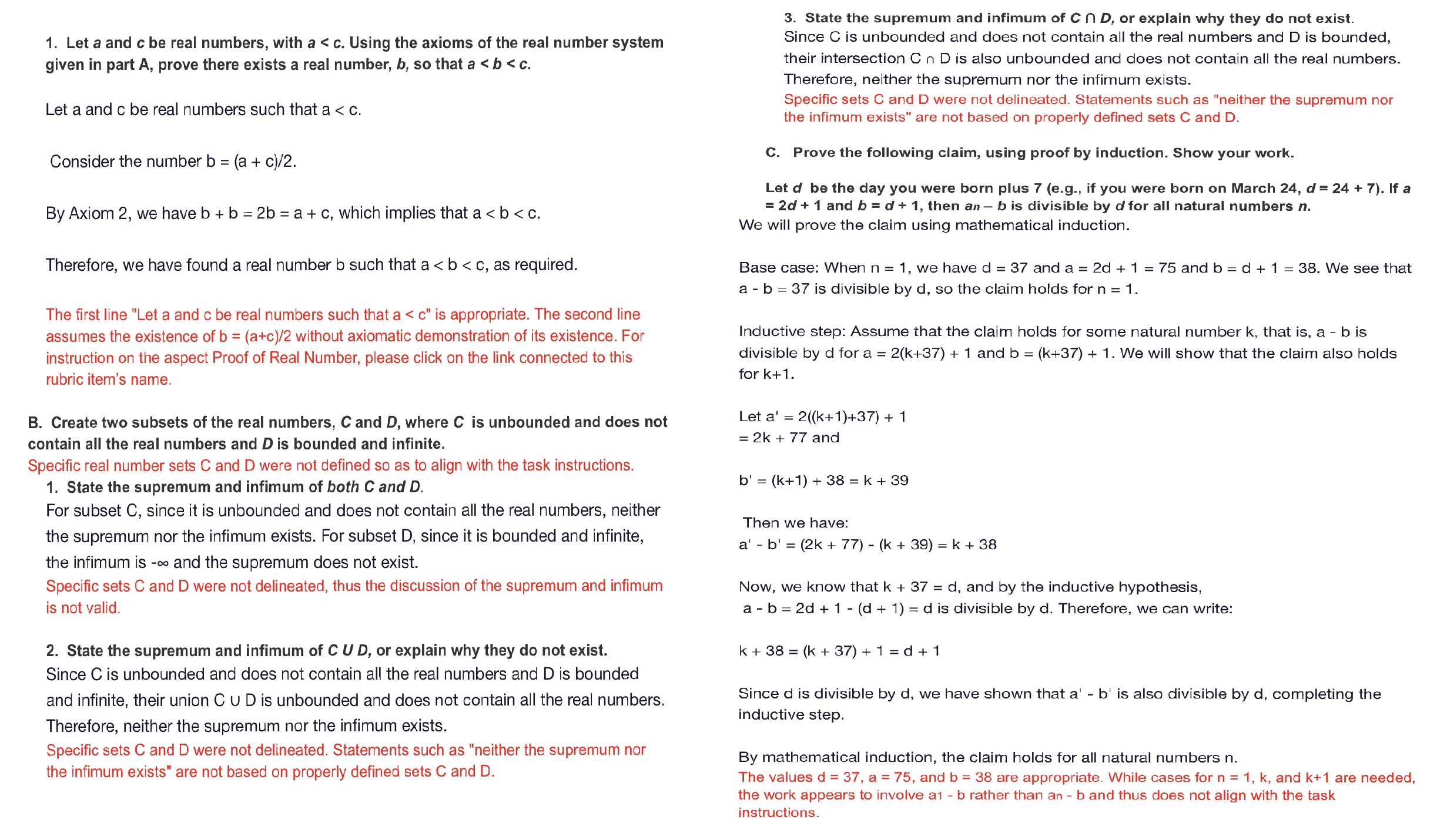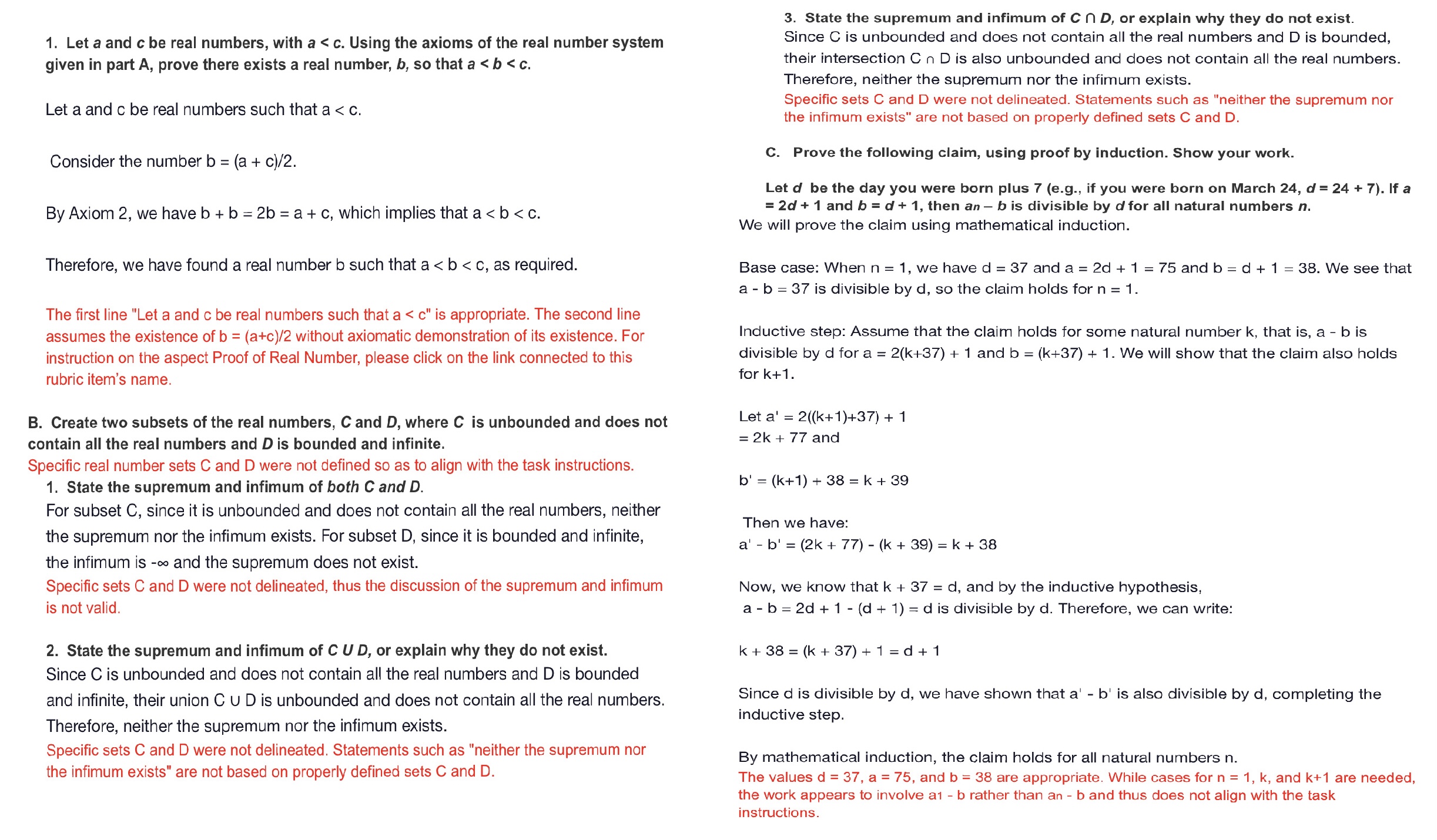Question
Attached is an assignment I submitted for my advanced calculus. The red text are the notes that the instructor gave me to correct. would someone

Attached is an assignment I submitted for my advanced calculus. The red text are the notes that the instructor gave me to correct. would someone be able to help me make corrections?
Here are the given Axioms:
Axiom 1: (x + y) + z = x + (y + z);(x * y) * z = x * (y * z)
Axiom 2: x + y = y + x; x * y = y * x
Axiom 3: x * (y + z)=(x * y)+(x * z)
Axiom 4: There is a unique element 0 ? R such that 0 + x = x for all x ? R.
Axiom 5: For each x ? R, there is a unique y ? R such that x + y = 0, and we write y = -x.
Axiom 6: There is a unique element 1 ? R such that x * 1 = x for all x ? R and 0 ? 1.
Axiom 7: For each x ? R, with x ? 0, there is a unique element y ? R such that x * y = 1, and we write y = 1/x.
Axiom 8: x y implies x + z y + z
Axiom 9: x y and y z implies x z
Axiom 10: For x, y ? R, exactly one of the following is true: x y, y x, or x = y.
Axiom 11: x y and z > 0 implies xz yz

Step by Step Solution
There are 3 Steps involved in it
Step: 1

Get Instant Access to Expert-Tailored Solutions
See step-by-step solutions with expert insights and AI powered tools for academic success
Step: 2

Step: 3

Ace Your Homework with AI
Get the answers you need in no time with our AI-driven, step-by-step assistance
Get Started


